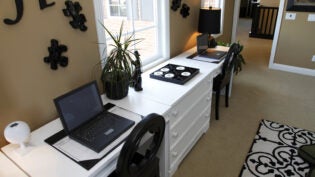
Andy Dunn, co-founder of men’s clothing brand Bonobos, deserves a lot of credit for making a bold statement seven years ago when he identified the opportunity for an online-only direct-to-consumer clothing brand that would disrupt the traditional brick-and-mortar model. It spurned a whole category of startups that followed the “Bonobos for X” model: for dress shoes, underwear, shorts, etc. And hundreds of millions in venture capital followed suit, with $127 million going to Bonobos alone.
But within the space of two years, an experiment to sell pants out of their offices has turned into a commitment to open 100 stores around the country, and they’re already at 17. A bevy of digital-first, e-commerce brands moving offline and building their own stores have followed: Rent the Runway, the women’s rental dress company is planning on opening a store later this year, with four or five more to follow. BaubleBar, the women’s jewelry company, is committing to stores in the Tri-state area.
At Blank Label, we’ve opened stores in Boston and Washington D.C., with plans to open 10 more in the next two years. Our original plan was to stay online-only, but in late 2012, we got invited to do a few trunk shows in Boston and New York. The No. 1 question we received was: “I’m really interested, where is your store?” We’d say our store was online, and at that point we lost them. Since opening our first store in Boston, we’ve seen a much higher basket size selling in person; in fact, our store’s average order value is more than double our website’s.
Here are the three characteristics which, based on our experience, we believe will impact the future of how stores are built. If you sell your products online and are thinking of opening your own store, these tips will help you get set up without breaking the bank.
No Inventory
Most traditional stores have a million dollars of inventory in the backroom of each of their stores, and takes a whole backroom team to manage and track. The new model is to have inventory consolidated in one or a couple of warehouses around the country, and ship them directly to the customer. Even though this means the customer can’t walk out of the store with their new items, it saves potentially millions in financing for store inventory.
You might be concerned with the lack of instant satisfaction that comes with leaving a store with new items, but companies like Amazon have taught us all to expect home delivery. We were pleasantly surprised we didn’t get any push-back on this. If capital is at all an issue for your business, holding inventory in one location as opposed to many is a strategy you should consider. Blank Label has been able to finance its growth mostly through its own cash flow, and a large factor is not having to finance inventory, which ties up capital. Opening new stores at this speed would not be possible if each of the locations needed to be stocked with goods.
Minimal Square Footage
With the same lean mentality, we focused on smaller stores and doing more with less space. That’s why our stores are between 1,000-2,000 square feet. Warby Parker states they’re doing around $3,000 per square foot, which means for a 1,000 square foot space they’re selling $3 million a year. At Blank Label, sales are $1,500 per square foot, having grown 50 percent each year for the last two years.
The total revenue figure alone is not overly impressive, but it’s more interesting within the context of the size. When we opened our first store, we were capital-constrained in the size of space we were able to afford. We really wanted to experiment with a retail model, but didn’t have the money to open a large store. With the no-inventory approach, we were able to use the majority of our floor space for product merchandising rather than stacks of different sizes in different colors, and we can open stores faster because the upfront cost is lower. It can feel cozy, but that’s also a bigger pro than a con because the store always appears very busy to a new customer. It begs the question whether you still need three-floor, 10,000-square-foot megastores. We agree with Warby Parker Co-CEO, Neil Blumenthal, who puts it this way: “Triple threat: profitable, brand elevating and awareness generating.”
Focus on Experience
Doug Stephens of the blog Retail Prophet introduced the idea of the store becoming a media experience, writing: “The store allows the consumer to engage the brand, its products and its culture in a visceral and emotional way that simply cannot be replicated online. Therefore, as more and more sales are attributed to mobile, social and online channels, the store’s strategic importance has to shift to delivering more powerful, galvanizing experiences that forge love and loyalty.”
Because word-of-mouth is such an important part of our marketing mix, Blank Label holds experience as the highest measure. We are intentional about calling our clients by name, the questions we ask to learn about their clothing preferences, the way we pin their garments to show them how they will fit, and the assortment we show them before they leave. As a result, our referral program, where each new customer is able to invite three people and offer them a $50 credit to try the service, accounts for over 60 percent of our new customer revenue. Our clients are also sent a simple survey asking them about their experience, with all responses visible company-wide. This allows us to spot any issues before they fester, and also offers the transparency of the founder’s email address which many people find comforting.
Consider these tips when weighing the decision of making the move from being online-only to opening a retail store: you may just discover that it’s possible to maintain a “best of both worlds” mentality while garnering new customers and keeping your brand’s values intact.
Author: Fan Bi is the CEO of Blank Label, an award-winning custom menswear brand, with stores in Boston, D.C. and now Chicago.












